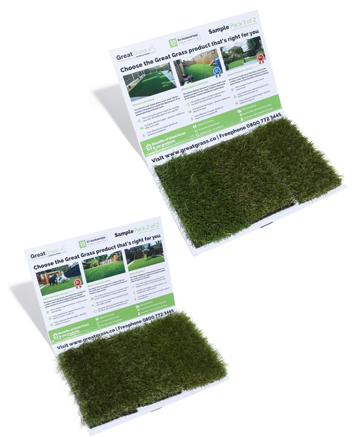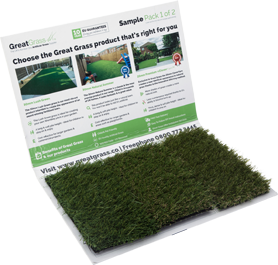In the modern-day home and garden market, artificial grass occupies an ever-expanding niche. From its beginning as a frowned-upon alternative to real grass in sports pitches, this material has gone on to become a staple in not only services meant for physical activity, but also domestic gardens and even certain public recreation areas. Its expansion was such that, in the present day, artificial turf can be considered almost omnipresent across the western world, often appearing on even the least expected places.
This rapid surge in popularity, and subsequent expansion, are not at all unwarranted, or even difficult to explain. Artificial grass has a number of traits which make it highly appealing to both home and garden-owners and public facility managers, particularly in certain parts of the world. For instance, the material’s resilient and durable build ensures that it can endure significant wear and tear, while its low maintenance requirements make it a perfect choice for instances where opportunities to tend after the surface are limited. In addition, artificial grass also does away with many of the main problems home and facility owners face when dealing with natural lawns, namely the need to keep it irrigated and the surface’s propensity to damage and need repair.
In addition to this unique combination of traits, the fact that artificial grass is highly versatile and can be put to a number of uses further helped it gain popularity across the western world. While there are a number of common and readily apparent uses this material can be put to, there are just as many alternative usages the average buyer may not immediately think of, but for which artificial grass is nonetheless highly advantageous.
As artificial turf specialists, GreatGrass come into contact with several of the latter on a daily basis, so we thought it would not be out of place to dedicate a blog post to revealing some of the lesser-known uses for artificial grass. Those uses are detailed in the lines below.
Playgrounds
Children’s playgrounds are one of several types of public facilities where artificial grass has slowly but surely been replacing natural materials, such as the traditional sand, cobble, or even natural grass.
The advantages of using artificial turf as the covering for a children’s play area go without saying. Children are naturally prone to getting dirty, for instance, and artificial turf does away with that element by being entirely sanitary; likewise, this type of material tends to be safer than the traditional alternatives for covering children’s playgrounds, in that they will neither cause allergies nor scrapes or bruises should the type of natural accident resulting from play occur. While certain turf carpets do cause the so-called ‘turf burn’, the ones used for children’s play areas tend to be soft and cushioned, precisely as a way of preventing this factor.
In addition, artificial grass carpets for children’s play areas can be designed in any kind of pattern, and it is not uncommon to see this type of surface fashioned after a race track or football pitch, as a way to stimulate the children playing in it. As such, it is not hard to see why this type of surface has gained traction when it comes to covering children’s playground.
Public Lawns
Replacing natural grass in public lawns is another of the lesser-known uses for artificial grass, but one which has quickly been gaining traction as well. While spaces such as parks and gardens have traditionally been associated with natural lawns, recent years have seen a progressive transition to artificial lawns in these types of facilities as well.
The reasons behind this transition are fairly similar to those causing artificial grass to become an increasingly popular choice for children’s playgrounds, namely the hypo-allergenic nature of the material, which means users of these spaces who sit on the grass are safe from rashes, cuts and allergies. Further, in spaces which allow pets, artificial grass makes it easier for both owners and facility staff to clean up after them, as it is much more straightforward to remove animal waste from artificial turf than natural grass. When put together with the other reasons detailed in this entry, this has led many park and garden caretakers and managers to choose to replace their existing natural lawns with artificial grass carpets.
Golf Courses
Finally, another of the lesser-known uses for artificial grass is as a covering for golf courses. While not as widespread or rapidly expanding as the other alternate purposes mentioned in the paragraphs above, this particular use has also been slowly but surely gaining traction with golf course managers the world over.
As with the usages above, this alternative use for artificial grass became popular due to eliminating many of the problems associated with natural grass in the context of golf. Notably, this type of material is more resistant than its natural counterpart, easier to replace in case it becomes damaged, and less prone to being affected by atmospheric conditions such as heavy rain. In addition, artificial turf is known to quicken the pace of play in sports such as football or hockey, and many players also appreciate the speed boost it can give to a golf ball as well. This, along with the other factors outlined in this paragraph, has contributed to make artificial grass a popular choice among golf course managers as well.
These are only some of a number of lesser-known uses for artificial grass which western garden owners, sports directors and public facility managers have slowly but surely become aware of over the past few years. As the popularity of artificial turf continues to expand, and the material’s reach across the western world becomes wider and wider, it is to be expected that more and more unusual or previously unexplored uses are found for artificial grass carpets, to add to the ones detailed in this article. Whatever the use it gets put to, however, one thing is clear: artificial grass has come a long way from being regarded as simply an inferior and unconvincing substitute to a real lawn!


